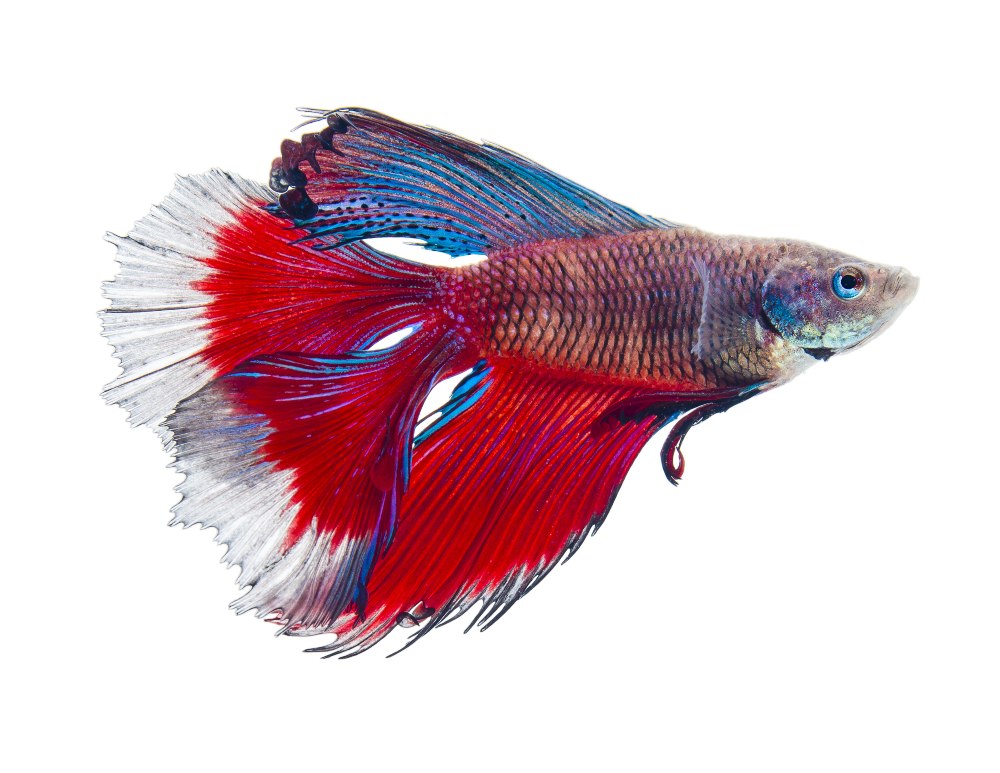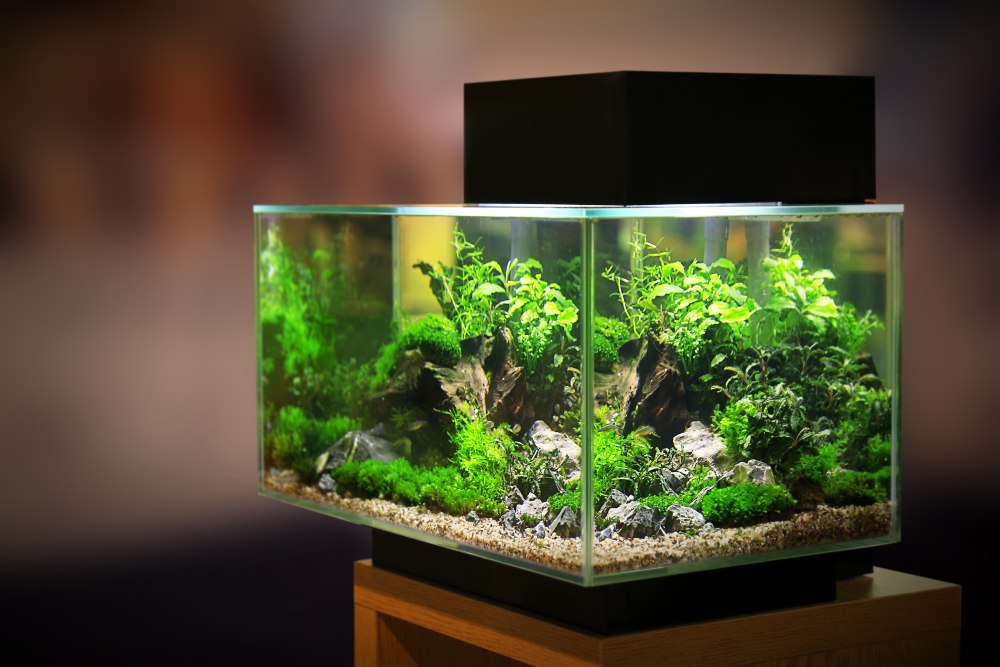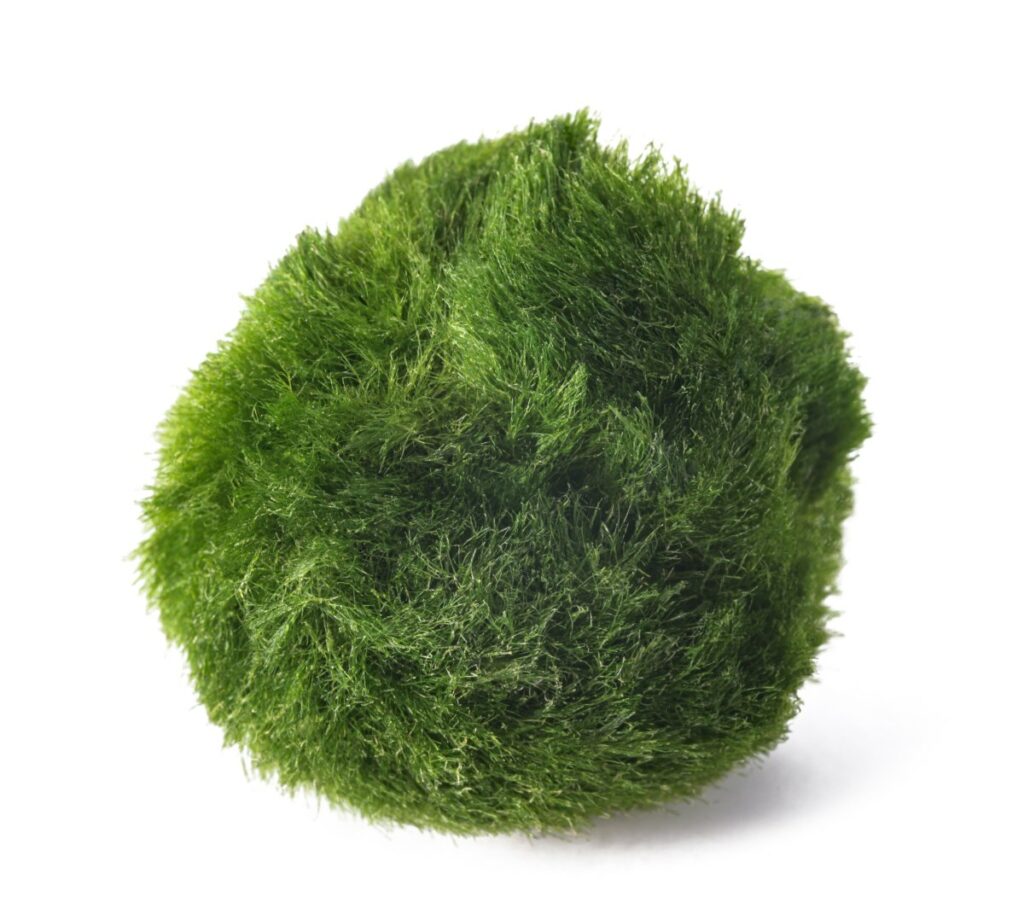The double-tail betta fish is an eye-catching and exotic Siamese fighting fish. Native to the warm waters of Southeast Asia, these vibrant fish come in various colors and patterns, making them as unique as they are beautiful.
With their elegant fins and vibrant personalities, double-tail bettas have quickly become one of the most sought-after types of betta fish for aquarists worldwide.
But there’s a dark side to their double tails. Today, we explore everything you need to know about double tail betta fish.
| Double tail betta overview | |
| Tail shape | 2 distinct flowing tails |
| Lifespan | 2 to 3 years |
| Diet | High protein, carnivorous diet |
Double tail betta: a detailed description

The double-tail betta, also known as the twin-tail betta or split-tail betta, is a unique and colorful species of freshwater fish that belongs to the Betta Splendens family. It is native to the tropical waters in Southeast Asia, specifically in Thailand, Cambodia, and Vietnam, where it can be found in rice paddies, canals, and stagnant ponds.
The fish got its name from its most distinct characteristic, its double tail, which is a result of a genetic mutation.
Not only is the double-tail betta a beautiful fish, but it also shares the same aggressive temperament as other bettas. It is a popular fish among aquarists and is highly sought after for its beauty and rarity.
However, due to its rareness, it can be difficult to find in pet stores and may come at a higher cost compared to other betta species.
Female versus male
You can differentiate between female and male double tails by looking at the fish’s fins and tails. The males have longer fins and tails, while the females have shorter fins and tails.
Regardless of their physical build, both male and female betta are available in a variety of colors like red, blue, yellow, orange, black, white, green and more.
Double tail mutation
The double-tail mutation in fish is a genetic deviation causing the caudal fin of a fish to split into two distinct tails.
This mutation is seen in various species of fish (like Goldfish), but is most commonly seen in the betta fish.
The double-tail mutation is a recessive trait, meaning that for a fish to exhibit this characteristic, it must inherit two copies of the mutated gene, one from each parent. The mutation results in the fish having two separate tails instead of the typical single tail.
However, the double-tail mutation can also have a negative impact on the fish’s swimming ability and overall health. The additional tail can cause the fish to have trouble swimming, making it more susceptible to disease and stress.
Additionally, the double-tail mutation can cause structural abnormalities in the fish’s body, such as a shortened spine, making it even more difficult for the fish to swim.
Despite these challenges, with proper care and attention, the double-tail betta can live healthy and vibrant lives in your home tank.
Caring for a double tail betta

Caring for a double tail betta fish is relatively easy. But there are several factors you must get right to keep your betta fish healthy.
Let’s have a look into the factors needed to put together a great double tail betta tank.
Tank size

You’ve probably seen betta fish (and other types of fish) swimming around in small bowls. But fish need room to roam, and keeping an intelligent species like a betta fish in a small bowl is cruel.

Betta fish are used to living in flowy streams and can’t adjust to tiny spaces.
If you keep just one betta fish, you should go for a five to ten-gallon tank. If there are other fish or other aquatic species, you need to size up. A bigger aquarium ensures your betta has enough room to keep to themselves, so they don’t feel threatened from—and act territorial towards—the other tank mates.
Tank setup
1. Plants

Since bettas are tropical fish, they love a densely planted aquarium. Decorate your betta’s tank with plenty of silk or live plants, like marimo moss balls and java ferns.
On top of making your tank look aesthetically pleasing, the plants provide places to hide for your betta fish.
Betta fish love hiding, and will appreciate a tank where they can do just that.
2. Substrates
Also, add gravel, small rocks, and other tank decorations to keep the betta engaged.
But don’t keep any sharp-edged substrates as they can damage the colorful fins of your beautiful double tail betta fish.

3. Shade
Bettas prefer a shady tank without too much light, and it should have the usual day and night pattern. Using lots of plants will have to keep the tank shady, imitating the bettas natural habitat. If you are using aquarium lamps, make sure to turn them off after sunset.
4. Filters
Additionally, don’t use a filter that’s too powerful. Bettas need certain filters as they’re used to living in slow flowy streams and a filter producing strong water currents will not only damage their fins, but also will stress out the fish.
Go for a soft filter like a sponge one or betta-specific filters, which are readily available at pet stores.
An aquarium filter is useful to keep the tank clean and remove harmful bacteria.
5. Water conditions
Like all fish in the Betta Splendens family, double tail bettas need their water to be between 75 to 80 degrees Fahrenheit and pH levels should remain between 6.8 to 7.5.
In terms of tank cleaning, change the water regularly. If you don’t have a filter, change 30%-50% of the water weekly and if you have a filter, you only need to change 20% of the water each week.
Bettas are susceptible to fungal infection and bacteria growth, and keeping them in a dirty tank will increase risk of infections, so aside from changing the water, do a full tank cleans every 6-8 months.
Aside from setting your tank to the above parameters, you need to make sure you keep the parameters stable. Double tail bettas get stressed with unstable water temperatures, and a stressed betta can get sick with different illnesses and diseases.
Note: If your betta gets sick, it will show visible signs by spending most of the time hiding, being lethargic, having white dots on their bodies, or losing color on its body and fins. Keep an eye on such signs to avoid any serious health issues.
Diet
Double tail bettas are carnivorous fish and require a diet packed with protein. Feed them live foods, frozen foods, insect larvae, high-quality fish flakes, and fish food specifically made for betta fish.
Just make sure you aren’t overfeeding your fish. Bettas are eager eaters and will eat everything you feed them (even if they’re full!). Ideally, you should feed your double tail betta fish twice daily for a few minutes per feeding. This way, your betta fish won’t over eat.
Tank mates
Double tail betta fish are just as aggressive as other fish in the Betta Splendens family, and prefer to be alone. But there are several types of fish you can keep as tank mates with your double tail betta.
Docile fish
We have already mentioned that these colorful bettas love being alone, however, you can keep them with some specific tank mates, specifically docile fish with calm demeanors.

Some species that your double tail will get along with are:
- Goldfish
- Neon tetras
- Cory catfish
- Guppies
- Shrimp
- Snails
- African dwarf frogs
Just make sure to get a larger tank and include plenty of plants for your betta fish to retreat to when they want to get away from the other fish in the tank.
And if you are keeping the betta in a shared tank, add the betta fish into the tank after adding in other fish. If your betta is the first fish in the tank, it will become incredibly territorial, so it’s better to add other your betta in last.
Other betta fish
Generally, you can’t have multiple betta fish in the same tank.
First, never keep two male bettas together. They will always spar and either one could get seriously injured.
Some aquarists find they can keep multiple female bettas together—known as a betta sorority. Female betta fish tend to be slightly less aggressive than males so you may find you can keep multiple female bettas in a single 15-gallon tank. However, this requires lots of attention and we only recommend sororities to expert aquarists.
In short, it’s best to keep your double tail betta fish separate from other bettas. There are plenty of other fish you can keep them with if you’d like a community tank.
Health issues
Double-tail bettas, like all bettas, can suffer from different sicknesses and illnesses. Some of the most common health issues for double-tail bettas include:
- Parasites: Bettas can be susceptible to parasites such as ich and velvet, which can cause skin irritation, cloudy eyes, and lethargy. To prevent parasites from taking over your tank, keep the water clean and perform regular water changes.
- Fin rot: Fin rot is a common illness that affects bettas, causing their fins to deteriorate and become frayed. Fin rot can be caused by poor water quality, stress, or injury. Keep sharp objects—like plastic plants—out of your tank and keep the water clean to prevent fin rot in your betta fish.
- Swim bladder disorder: Swim bladder disorder is a disease where a betta’s swim bladder (which controls the fish’s buoyancy) becomes damaged or infected. This causes the fish to become bloated or have trouble swimming. Swim bladder is commonly caused by overfeeding, and you can prevent it by feeding your fish the right amount of food.
- Stress: Bettas get stressed easily from things like poor water quality, a crowded tank, or aggressive tank mates. If your betta gets too stressed, it will develop stress stripes. Setting up a great tank environment and keeping your tank clean can prevent your betta from feeling overly stressed.
Price
Double tail betta fish cost anywhere from $10 to $25+. Like mentioned earlier, the double tail is a mutation and isn’t easy to find, so while you may find them in pet stores, your best chance at finding a double tail betta is by searching through betta fish recues and betta fish breeders.
Breeding double tail bettas
Although this mutation is beautiful, it can cause issues. The double tail mutation causes parts of the body to mirror one another. That’s how you get two tails that look the same. In the tail alone, this mutation doesn’t cause much trouble.
However, the mutation can spread to the body of the fish and cause humped backs and bladder issues.
For this reason, we only recommend experience aquararists take on betta breeding for double tails.
Conclusion
Double tail bettas are fascinating and beautiful and make for a good aquarium fish. However, to ensure your pet betta lives a healthy and happy life, you have to pay special attention to the tank conditions, tank setup, diet, and tank mates.
If you can provide all these required conditions, this fighting fish will live happily in your home tank!
FAQs
You shouldn’t keep two split tail (double tail) bettas in the same tank unless you are an experienced fish owner. Keeping two or more betta can result in spars, and even death if not done properly.
You need at least a five to ten-gallon tank to house a betta fish. But if you are keeping other fish, you need a bigger tank.
Yes, you can keep betta fish in a shared tank, provided the other species are not as aggressive as the betta fish.
Double tail bettas cost $10 to $25.
Twin tail betta fish and double tail betta fish are the same type of fish.
